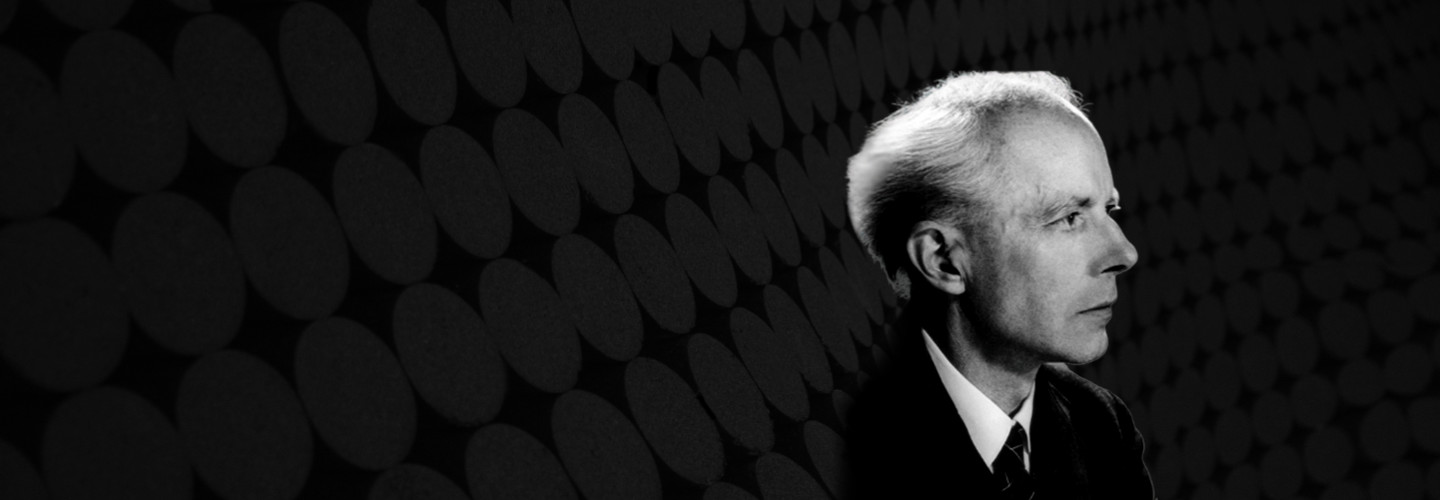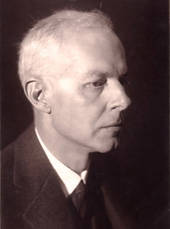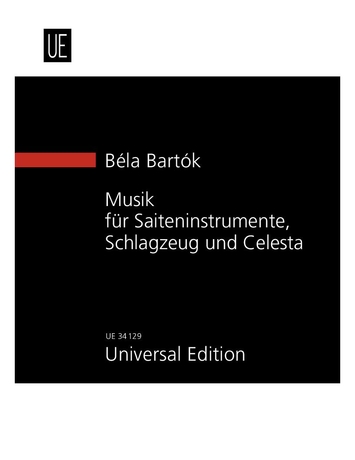

Béla Bartók
Music for String Instruments, Percussion and Celesta
Short instrumentation: timp, perc(2), xyl, hp, cel, pno, str
Duration: 25'
Dedication: Dem Basler Kammerorchester und seinem Leiter Herrn Paul Sacher zugeeignet.
Instrumentation details:
timpani
percussion(2)
xylophone
harp
celesta
piano
violin I
violin II
violin III
violin IV
viola I
viola II
violoncello I
violoncello II
contrabass I
contrabass II
Bartók - Musik für Saiteninstrumente, Schlagzeug und Celesta for string instruments, percussion and celesta
Printed/Digital
Translation, reprints and more

Béla Bartók
Bartók: Musik für Saiteninstrumente, Schlagzeug und CelestaOrchestration: für Saiteninstrumente, Schlagzeug und Celesta
Type: Partitur (Sonderanfertigung)

Orchestration: for string instruments, percussion and celesta
Type: Studienpartitur
Sample pages
Audio preview
Work introduction
On 30 January 1929 Béla Bartók gave a concert in Basel with his own compositions, assisted by two Hungarian musicians, both of whom lived in Switzerland: the violinist Stefi Geyer and the singer Ilona Durigo. One of the members of the audience was the 22-year-old conductor and leader of the Basler Kammerorchester, an ensemble founded in 1926 with the aim of cultivating the little-known field of early music and the even less familiar field of new music. The young conductor was Paul Sacher. This momentous encounter between Béla Bartók and Paul Sacher was to enrich 20th century music with three masterpieces: the Music for Strings, Percussion and Celesta (1936), followed shortly after by the Sonata for Two Pianos and Percussion (1937),and the Divertimento for Strings (1939). As Paul Sacher told the author of this preface some 40 years later, the music he heard on that evening in 1929 had a powerful effect upon him. The experience, probably in combination with the composer’s growing success, motivated Sacher to commission a new work by Bartók for a concert planned for 21 January 1937 to celebrate the 10th anniversary of the orchestra’s first performance. In a letter of 23 June 1936, received by the composer during his summer holiday in Braunwald in Switzerland, Sacher informed Bartók that Arthur Honegger, Conrad Beck and Willy Burkhard had all agreed to compose new works about 15 minutes in length (in the event, a work by Honegger did not appear on the programme of the festival concert). Sacher’s letter also dealt with certain organisational, legal and financial matters. The performing ensemble was to consist of about 30 strings, which could, if necessary, also be joined by piano, harpsichord or any percussion instrument. The conductor asked for the right to the world premiere only, for which he offered the composer the sum of 500 Swiss francs. He furthermore added: ‘Perhaps I ought also to mention that the work should not be too difficult technically, as I would like to make it part of our repertoire for concerts on tour.’
Bartók replied promptly with a positive answer penned on 27 June 1936. He was ready to write a work under the conditions specified by Sacher. ‘I am thinking of a work for string and percussion instruments (i.e. piano, celesta, harp, xylophone and percussion in addition to strings); I assume that these forces will not cause any difficulties.’ Bartók’s letter also touched on the question of technical difficulty: ‘The fulfillment of your request that the work be not overly difficult is a more delicate issue. To a large extent I will probably be able to avoid difficulties of execution, but it is another matter to avoid difficulties of rhythm. Anything new already poses difficulties for the players because of its unfamiliarity. At any rate, I will try to write something relatively easy to play in this respect, too. After all, I do not write music with the express intention of producing things that are hard to perform.’
These lines verify that Bartók, upon receiving Sacher’s letter, already had specific ideas regarding the themes and timbres of the requested work. In order to extend the sound in his compositions, he had been making an intensive study of the timbres of various percussion instruments and of their possible combinations. In the 1930s, Bartók borrowed a set of these instruments from the Budapest instrument-makers Sternberg, in order to study them at home. After his return to Budapest, Bartók set to work immediately, as he had only ten weeks at his disposal to finish the score (interrupted by a short stay in the Tatra mountains and preparations for a longer journey to Turkey). At an early stage, when he drew up the formal proportions (a task to which Bartók always gave high priority), it became clear that he would exceed the stipulated duration: The new work would be 24-25 minutes long and would be in four movements.
The score was completed on 7 September 1936. Pressure of time compelled the composer to forsake his usual procedure of first drawing up sketches and particella, instead of which he embarked straightaway on the fair copy, which he then refined in the course of September and October. All that remained was for his publisher, Universal Edition, to hasten to prepare a lithograph conductor’s score from the (not easily legible) autograph and then produce the orchestral parts. As the Basler Kammerorchester at that time consisted partly of amateurs, Sacher needed to start rehearsals as soon as possible, that is to say, at the end of November. It was not until 22 December 1936 that Bartók informed his publishers of the definitive title: Musik für Saiteninstrumente, Schlagzeug und Celesta (in 4 Sätzen).
On 19 January 1937 the composer arrived in Basel in order to be present at the last two rehearsals. He particularly wanted to check whether the members of the orchestra were up to his technical innovations (glissandi, the ‘snap pizzicato’, arpeggio effects in both directions etc.). He was relieved to be able to write to his wife in Budapest that, contrary to his expectation, all had gone well, almost perfectly indeed. The anniversary concert on 21 January, in which his composition was played last, was a great success for both composer and performers. The last movement even had to be repeated. The advertising brochure of Universal Edition was soon able to report that the work had enjoyed triumphant successes worldwide, with around 50 performances in its first year. The Music for Strings, Percussion and Celesta received premieres in a large number of countries: in Geneva and Lausanne under Ernest Ansermet, in Berlin under Wilhelm Furtwängler, in Paris once again under Paul Sacher, in Budapest under Ernst v. Dohnányi, in New York under Sir John Barbirolli, in Philadelphia under Eugene Ormándy, and so on.
The Music for Strings, Percussion and Celesta is a central work not only in Bartók’s oeuvre: It is also recognized as a key work in the music of the 20th century. Of the large number of scholarly articles devoted to it, I would like to stress here the particular importance of two studies. One is the stylistic analysis by Ernö Lendvai, dating from 1955, which opened up entirely new paths in Bartók research. This study was the first to reveal the formal and harmonic principles on which the composition is based (golden section, axis system etc.). The other notable analysis is Felix Meyer’s foreword to the facsimile edition (2002) of Bartók’s composition, which contains a detailed account of the genesis of the work and conclusions of fundamental importance. In this preface, it shall suffice to reprint the concise information that Bartók sent to his publisher on 10 April 1937:
‘First movement, in A. According to certain principles, this is a fairly strict kind of fugue, composed as follows. The 2nd entry sits a fifth higher, the 4th also a fifth higher than the 2nd, and so on with the 6th, 8th etc.; the 3rd, 5th, 7th and so on, on the other hand, are all a fifth lower. Once the most distant key – E flat – has been reached in both directions (high point of the movement), the subsequent entries have the subject in inversion until the home key of A is reached, after which there is a short coda. N.b. 1) Certain neighbouring entries appear in stretto, and 2) some of the entries do not bring the subject in its complete form, but only a fragment of it.
Second movement, in C. Sonata form (second subject in G). The development contains a transformed version of the subject of the first movement, and also an allusion to the main theme of the fourth. At the recapitulation, the 2/4 rhythm of the exposition is changed to 3/8.
Third movement, in Fsharp. “Bridge form”: A, B, C, B, A. A part of the subject of the first movement appears between each of the individual sections.
Fourth movement, in A. Form: A+B+A, C+D+E+D+F, G, A. Section G (bars 203-234) contains the main subject of the first movement, not in its original chromatic form but in an extended, diatonic version.’
Although Bartók’s information is precise, he only deals with the work’s formal construction, which is only one of the features to which the work owes its worldwide fame. Masterly though it is, the formal construction serves as a vehicle for a new kind of symphonic dramaturgy and for a new and irresistibly effective kind of musical poetry. The densely chromatic first movement constitutes a ‘New Art of Fugue’. The second movement is a wild, allegro barbaro-like scherzo based on one of Bartók’s ‘visiting card motifs’. The third movement is a lament inspired by Hungarian folk music, framed by awe-inspiring nature sounds. Once, when Bartók heard this movement off-stage during a concert in Antwerp, he said to his chamber music partner, the violinist André Gertler: ‘Listen, those are the sounds of the sea and the waves: all the notes of the scale at the same time!’ After the catharsis of the first three movements, the finale makes room for purification and hope.
In spite of the work’s monothematic conception, all four movements have their own individual character. The constant return of the fugal theme from the first movement gives organic unity to a series of complementary moods. The theme appears either in its original form or in inversions, sometimes slow, in chromatic trepidation, and elsewhere as an expression of pure diatonic dignity and joy. All in all, the work is a masterpiece both of construction and of musical poetry.
Ferenc Bónis, 2008
